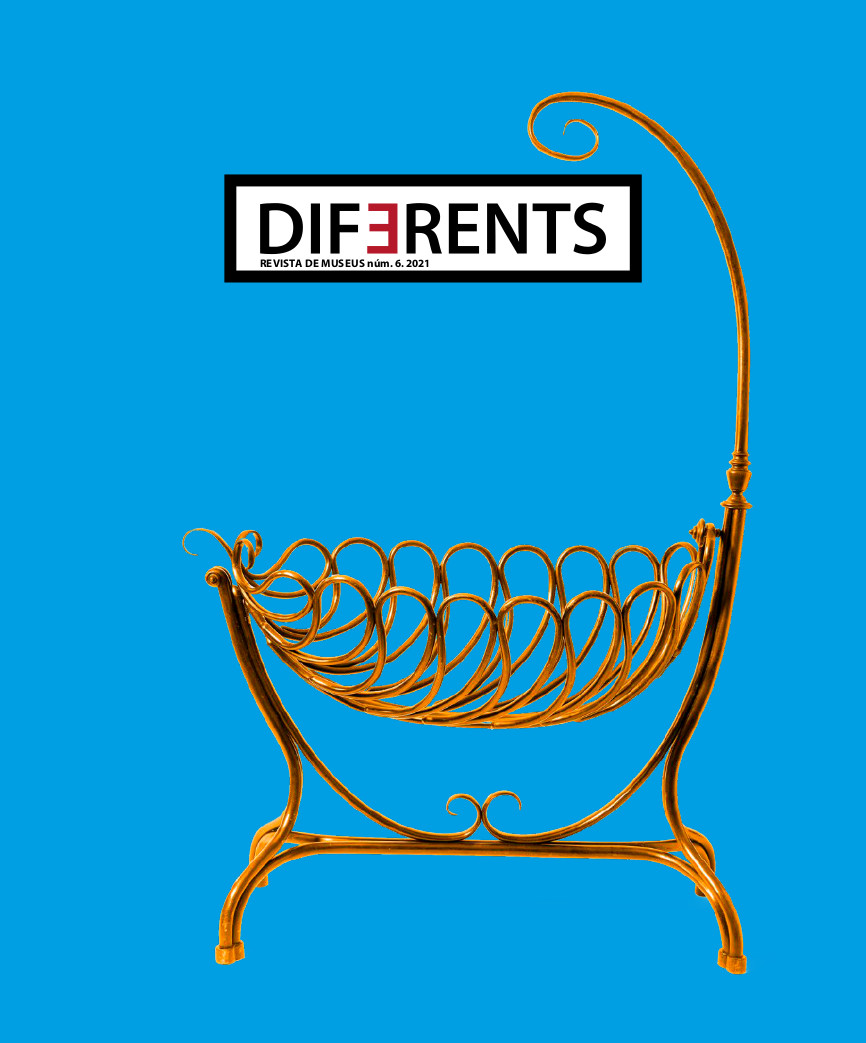The Image of the Museum in Film
Main Article Content
Abstract
Museums have often appeared in different films as a stage and generally highlighting their role as a place of exhibition, contemplation, and learning. As opposed to real life, the museum is shown as the ideal place for sinister murders as well as the scenario for grand heists since it is home of the greatest works of Humanity.
However, some of its other functions –such as dissemination, restoration, conservation or research– are not usually featured in cinema, perhaps because though these are necessary activities for a museum, they are not entirely necessary for the plot of a film set in a museum.
Downloads
Article Details
References
ÁLVAREZ DOMÍNGUEZ, Pablo; BENJUMEA COBANO, Juan Rubén (2011). «Aproximación al museo contemporáneo: entre el templo y el supermercado cultural». Arte y Políticas de Identidad, 5, pp. 27-42. <https://revistas.um.es/reapi/article/view/146201>
BARRIENTOS-BUENO, Mónica (2017). Dentro del cuadro: 50 presencias pictóricas en el cine. Barcelona: Editorial UOC.
BROWN, Karen; MAIRESSE, François. «The definition of the Museum through its social role». Curator. The Museum Journal, 4, pp. 525-539. <https://doi.org/10.1111/cura.12276>
CABALLERO ZOREDA, Luis (1980). «El museo: funciones, personal y su formación». Boletín ANABAD, 3, pp. 377-385. <http://digital.csic.es/bitstream/10261/13858/1/965418.pdf>
CARBONELL, Eduard (2005). «Reflexiones en torno a los museos, hoy». Museos.es, 1, pp. 12-21. <http://www.culturaydeporte.gob.es/dam/jcr:5bfa58b5-5877-455a-8fbf-6c7651c35788/s1-1entornoalmuseo.pdf>
CASAS, Quim (2010). «Erich Rohmer: entre París y el santo grial», Dirigido por, 396, p. 76.
CASAS, Quim (2016). «El arte y el poder», Dirigido por, 467, pp. 22-23.
CASAS, Quim (2017). «Arte contemporáneo». Dirigido por, 482, pp. 18-19
DÍAZ, Montserrat (2020). «Los grandes robos de arte» [blog], <https://losgrandesrobosdearte.wordpress.com/category/robos-en-museos/> [20 de agosto de 2020]
ESTRADA LORENZO, José Manuel (2019). La imagen del artista en el cine: vitae, mito y perfiles de pintores, escultores y arquitectos [tesis doctoral]. Madrid: Universidad Complutense. <https://eprints.ucm.es/57583/1/T41411.pdf>
FALK, John H.; DIERKING, Lynn D.; and FOUTZ, Susan, editors. In Principle, in Practice: Museums as Learning Institutions. Lanham, MA.: Altamira Press.
GIMENO UGALDE, Esther (2011). «Cuadros en movimiento: la pintura en el cine. Relaciones intermediales en La hora de los valientes (Mercero 1998) y Te doy mis ojos (Bollaín 2003)». Olivar: revista de literatura y cultura españolas, 16, pp. 215-240. <http://www.memoria.fahce.unlp.edu.ar/art_revistas/pr.5129/pr.5129.pdf>
LATORRE, José María (2007). «El arca rusa», Dirigido por, 371, p. 93.
LE GENISSEL, Aurélien (2015). «Tres horas en el museo», Dirigido por, 453, p. 31.
LEÓN, Aurora (1988). El museo. Teoría, praxis y utopía. Madrid: Cátedra.
VALDÉS SAGÜÉS, Carmen (2008). «La divulgación, una función del museo». Museos.es, 4, pp. 64-75. <http://www.culturaydeporte.gob.es/dam/jcr:864e98ce-9d20-4d25-bf6b-eb43fb9503b2/desde-difusion-funcion-museo-c-valdes.pdf>


